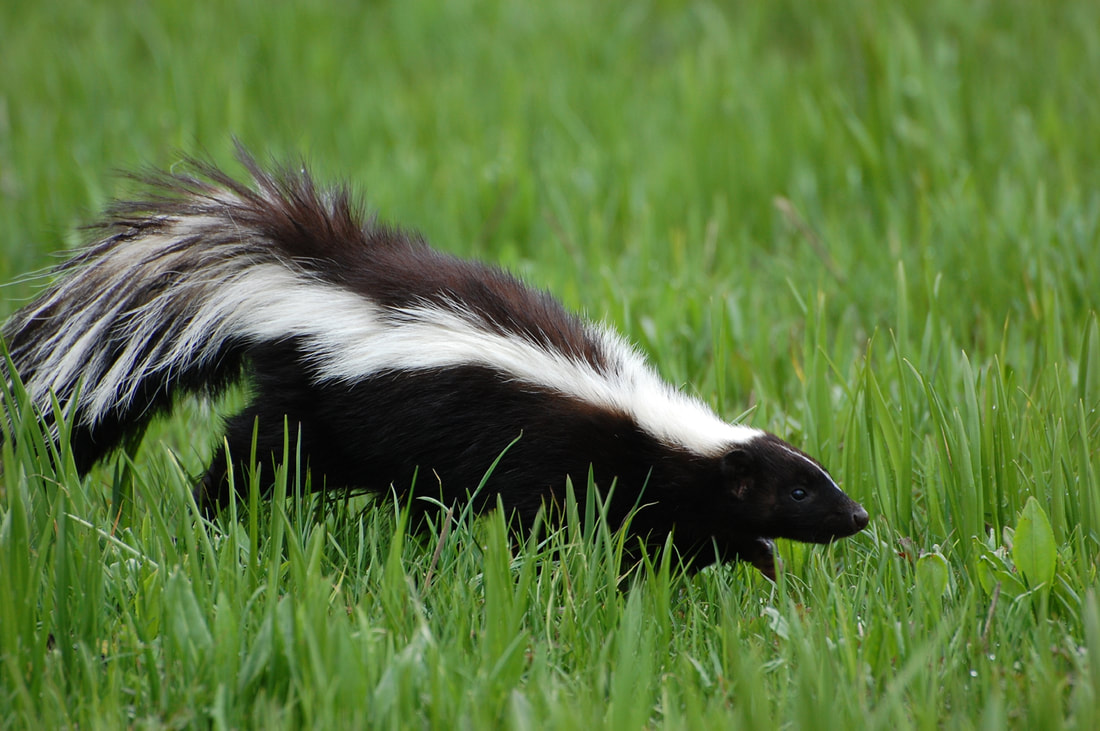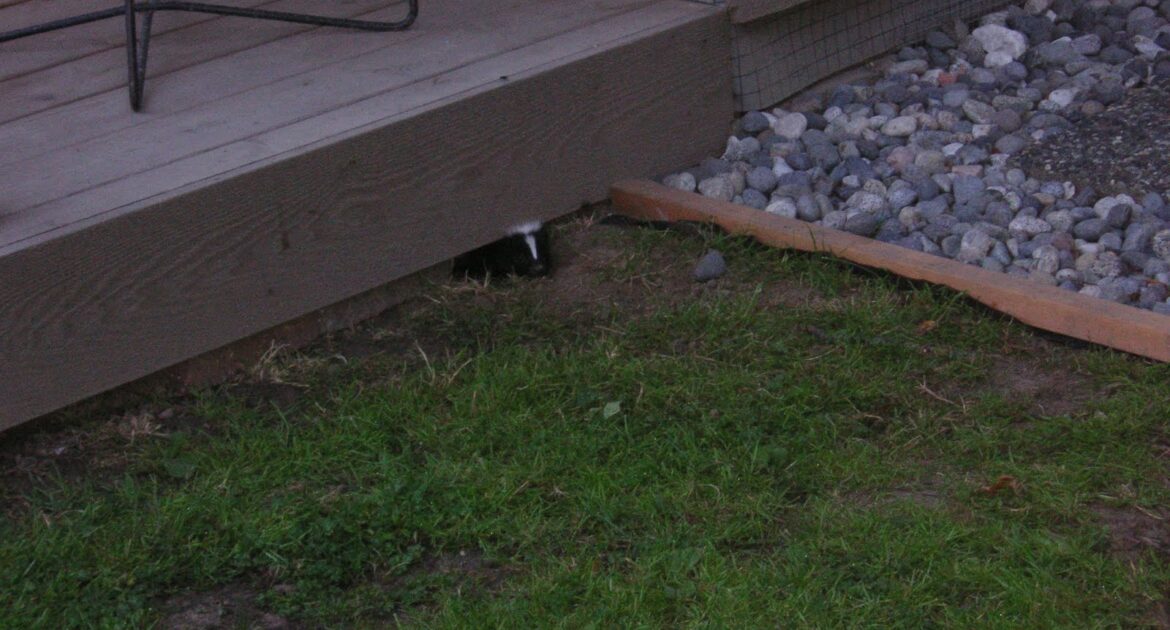The skunk is an animal only found in North and South America, though they have distant relatives on other continents. There are 12 different species of skunks, but some are more common than others in various parts of the continent. Therefore, there are some skunks that you are more likely to encounter than others. Different skunk species can look very similar, but there are subtle differences that you can use to tell them apart.
Spotted Skunk

All skunks have distinctive patterns of black and white fur. This helps to serve as a warning to potential predators that messing with a skunk can cause big problems for them. With many skunk species, the white stripes in the black fur are solid and unbroken. With a spotted skunk, the stripes are segmented, giving the fur a mottled appearance. These patterns are like fingerprints; each individual spotted skunk has its own unique set of markings.
Skunks are generally burrowing animals and are not good at climbing trees. The spotted skunk is an exception; they are adept at climbing trees and like to make their homes in wooded areas. If you see a skunk in a tree, you can probably figure that it is a spotted skunk even if you do not get a good look at its markings.
All skunks typically send out warning signals that they are about to spray. The spotted skunk gives one of the most elaborate displays. It stands on its front legs and seems to do a little dance with its rear end pointed up in the air, the better to aim its spray at the perceived threat if it doesn’t back off.
There are four different types of spotted skunk, but only the eastern spotted skunk may be found in Ontario, and then only rarely. Eastern spotted skunks are a threatened species, so while it is unlikely that you will ever see them on your property, it is crucially important that you call Skedaddle Humane Wildlife Control in Markham if you do. That way, skunk removal can take place without harming the vulnerable animals.
Hooded Skunk

If you ever come across a hooded skunk, you may mistake it for the more common striped skunk. While the latter has two white stripes running from the head down the length of the body to the tail, the hooded skunk only has one that covers its head, its neck, and most of its back. This gives the impression that the skunk is wearing a hood or a cowl, hence its name.
Compared to other skunk species, hooded skunks are relatively small, but their tails are longer than their bodies. They also have longer fur than other skunk species, which adds to the perception of wearing a woolly cape. You are unlikely to encounter a hooded skunk in Ontario, but they are the most common skunk species in Mexico.
Striped Skunk

If you do encounter a skunk on your property, it is most likely to be a striped skunk. This is the most common skunk species. Its range covers almost all of the United States and Canada, with the exception of arctic regions and a desert area in the southwestern U.S., and extends into the northern part of Mexico.
Striped skunks have shaggy-looking fur that is nevertheless shorter than that of the hooded skunk and two long stripes running the length of its body instead of one. Starting at the head and then bifurcating, the stripes form an approximate V-shape. Scientists theorize that the stripes point toward the skunk’s anal glands, which spray its noxious fluid, serving as a warning to potential predators by pointing toward its most potent weapon.
Call Skedaddle for Wildlife Control in Markham
Humane skunk removal by professionals is in the animals’ interests as well as yours. Find out more about the services we offer in Markham.




